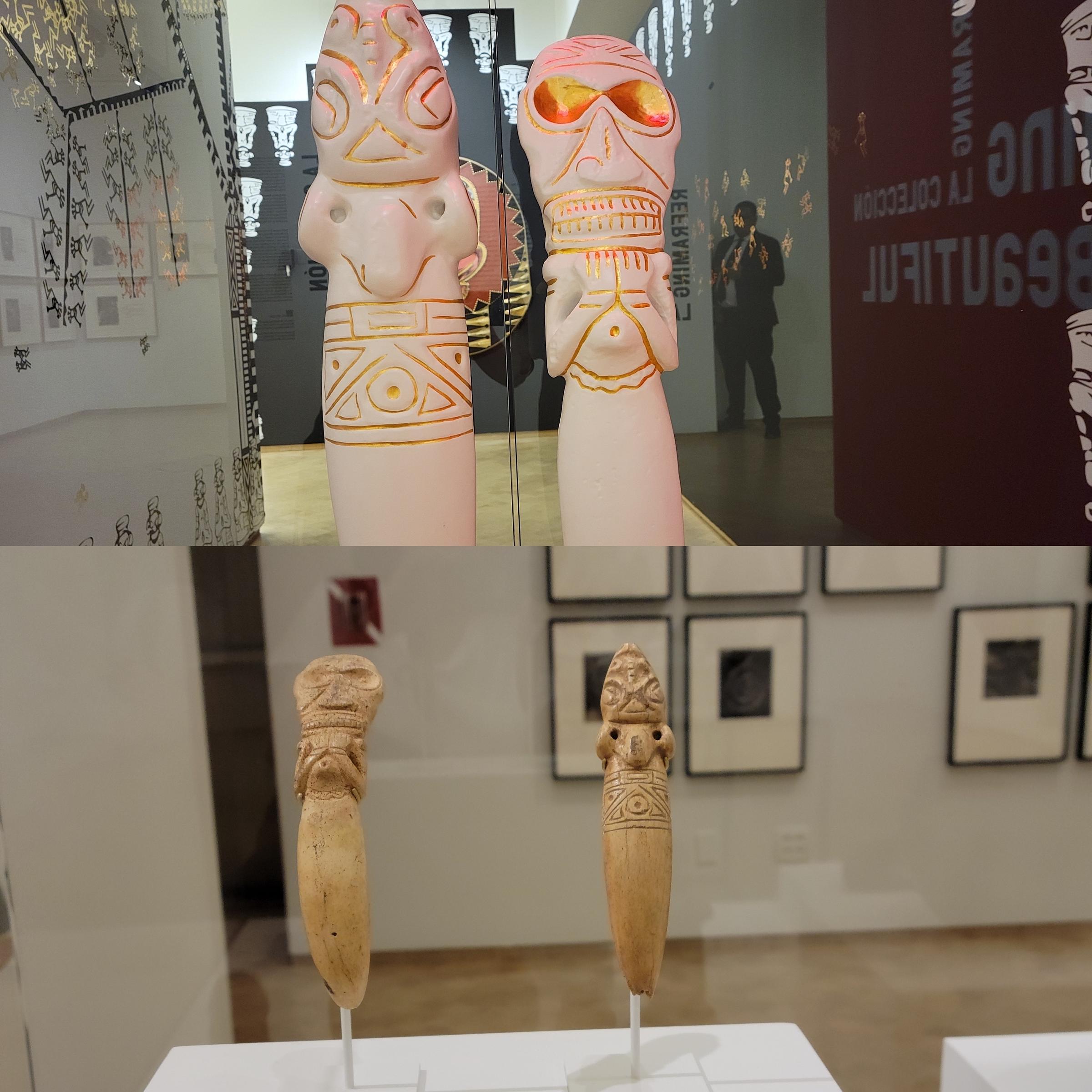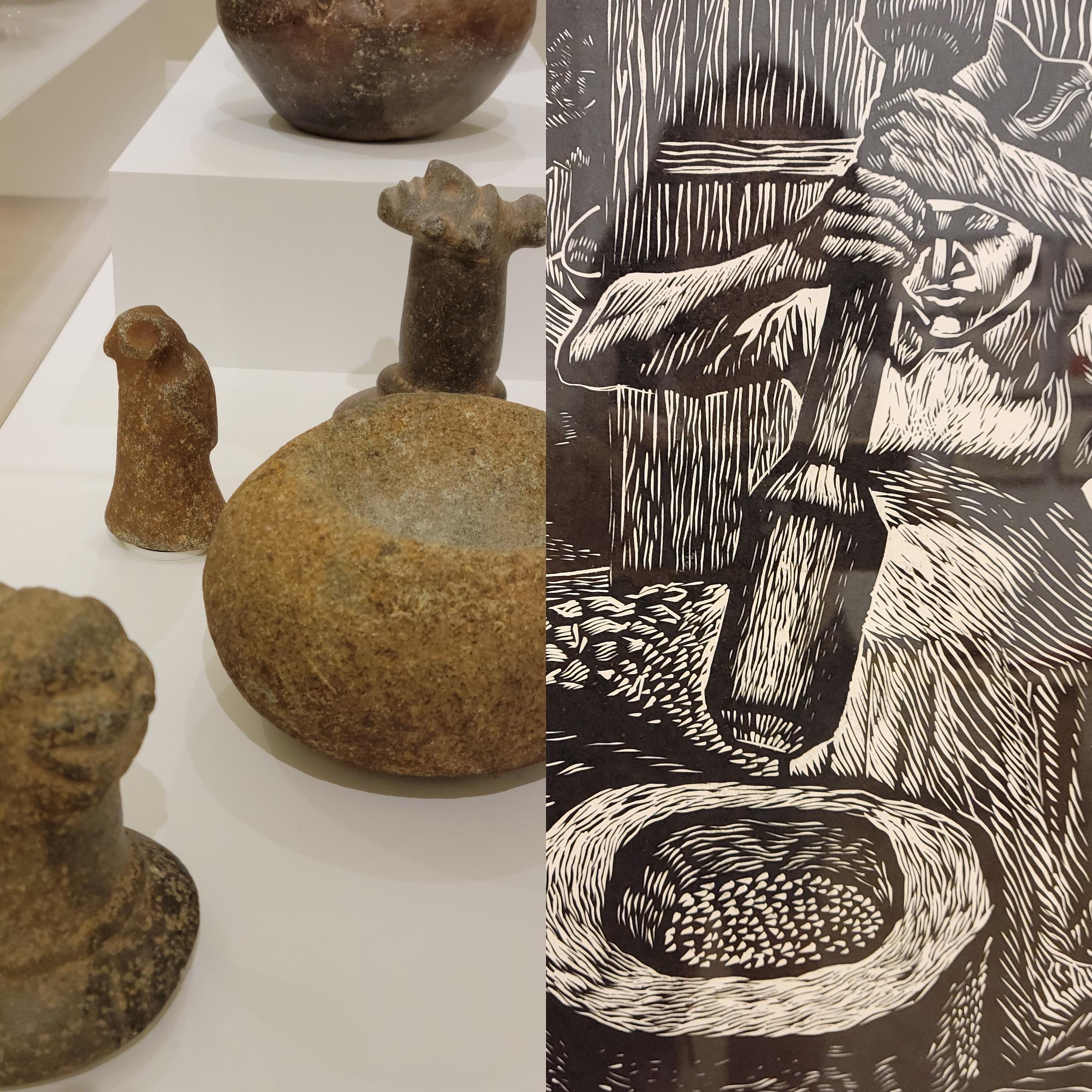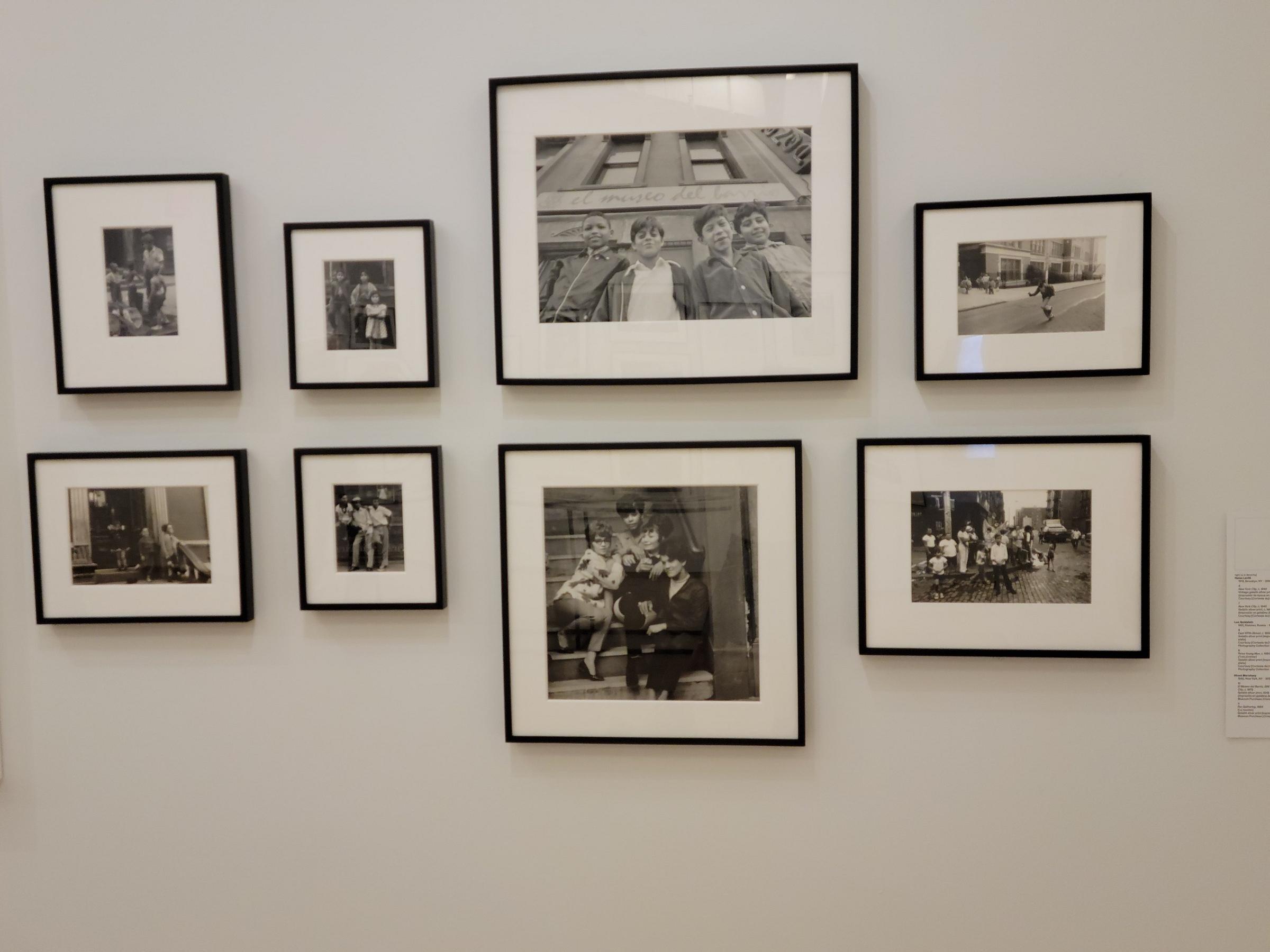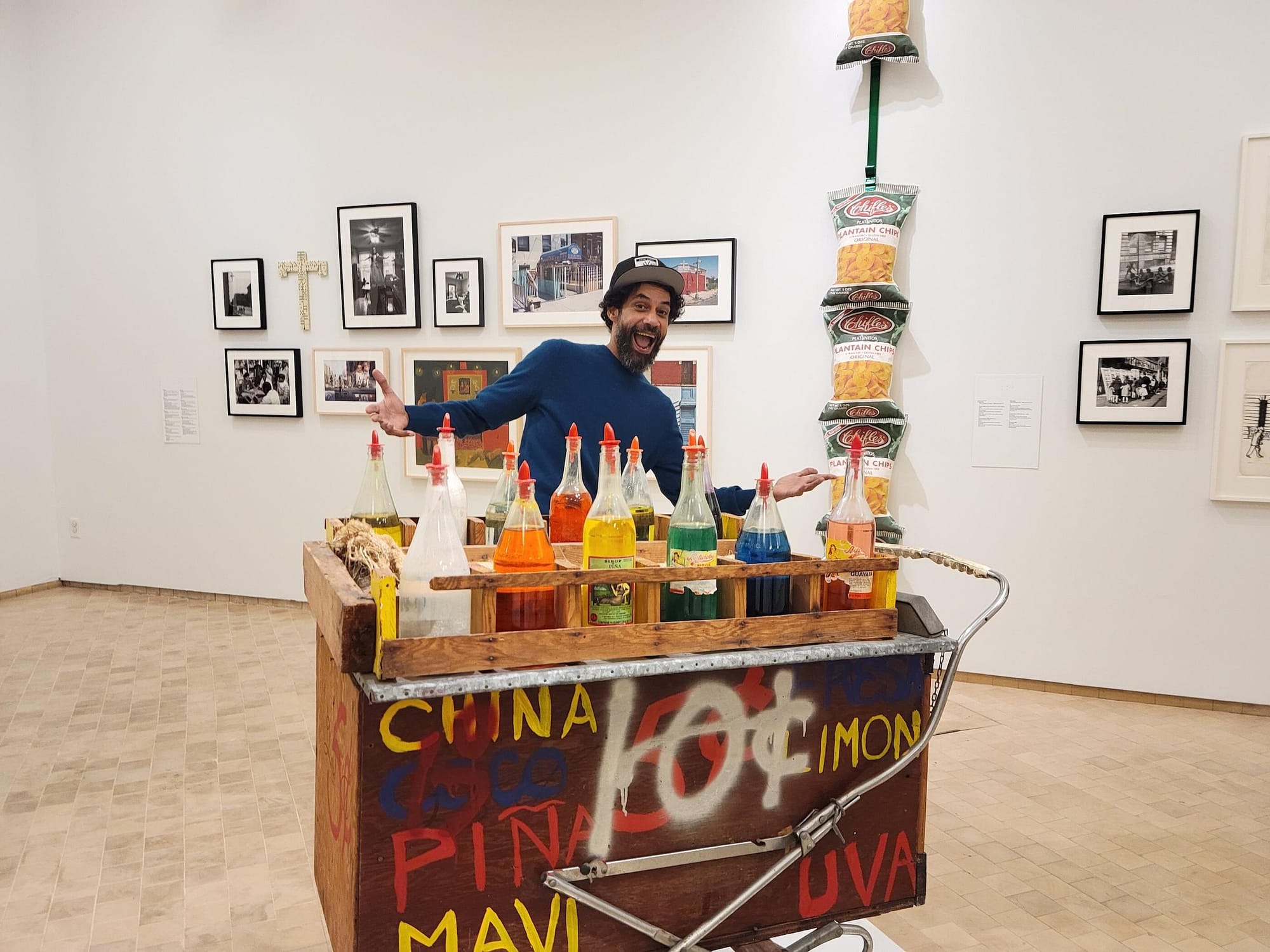Something Beautiful: Reframing La Colección
El Museo del Barrio
1230 Fifth Ave. at 104th St.
New York, NY
Through March 10, 2024
Upon entering Something Beautiful: Reframing La Colección, visitors touch the site-specific commissioned door handles. This act signifies a purification ritual before crossing the threshold into a sacred space, a museum of the neighborhood.
Something Beautiful uses artwork and artifacts from the museum’s permanent collection to tell the history and culture of the Caribbeans and of Latin America. The museum focuses on its neighborhood, heavily influenced by Puerto Rican, Dominican and Cuban residents.
Our neighborhoods are often part of our identities, ideas, thoughts, and values. They can reflect our vision of what we choose to live amidst — what matters to us.
We bring museums to where we live, and in them express integral aspects of ourselves. One place that directly brings to life this concept of a museum in a neighborhood and a neighborhood in a museum is El Museo del Barrio.
“This is my favorite piece in the museum,” said museum educator Carlos Jesus Martinez-Dominguez, pointing out artist Edgar Ruiz Zapata’s shaved ice cart. The artist found and assembled the artwork from what was left on the streets of East Harlem. With a baby carriage as a makeshift chassis, a 1970s entrepreneur’s contraption transformed into a mobile predecessor of today’s trendy food trucks.
What Puerto Rican vendors call piragua (and Dominicans call frio frio) these days should cost about $3 to $4.
“If they charge you $5, they’re being really mean to you,” added the Puerto Rican-Dominican New York artist with a smile.
For Martinez-Dominguez, the artwork hits home with personal meaning. He described how many immigrants move to the U.S. and will work in factories, in jobs that they do not enjoy.
“My mom came here with an engineering degree and ended up doing menial work,” he said. “This represents the first self-owned business of a Puerto Rican. It’s the person who says, ‘I’m going to open my own business. I’m going to make my own money.’ That’s very powerful to represent.”

Behind a glass case, intricately carved bone kuisa, a Taino word for “purification instruments,” are on display in the show. They date back to 1200 to 1500 CE. The door handles are enlarged representations of the kuisa, which are only about the size of an adult finger. People used these objects to orally induce vomiting to fully cleanse their bodies from the inside, before entering hallowed sanctuaries. Although the descendants of Taino no longer use such tools, around the world people maintain traditions of cleansing and absolution.

Ancient stone mortars and pestles show a remarkable consistency in the endurance of some popular tools. In a gallery room dedicated to the art of printmaking, artist Rafael Tufiño’s prints depict the struggles of Black Puerto Rican slaves. The artwork illustrates revolution, labor, and other images with political ends. Puerto Rican artists were often activists, talented in printmaking and then wheat pasting prints around the neighborhood in protest. Slavery in Puerto Rico was abolished in 1873. By comparison, the U.S. Congress ratified the 13th Amendment to end slavery in 1865.
Martinez-Dominguez emphasized Puerto Rico’s history of revolt and struggle against oppression.
“The museum is called El Museo del Barrio. Barrio is a ‘hood,’ a certain type of neighborhood, a lower-income neighborhood,” he said. Now, some board members are fighting to remove “del Barrio” from the museum’s name, according to Martinez-Dominguez.
“It’s too low-class, too low-brow for them. They want it to just be El Museo,” he said. “Right now, there is a fight for the soul of this museum.”
The artist opined that the museum should be about the neighborhood. He pointed out how Hiram Maristany’s photographs show everyday people in the area. The photographer served as the third director of El Museo del Barrio and the official photographer of the Young Lords, a Chicago street gang of the 1960s that grew into a nationwide civil rights organization.

In Maristany’s photograph, four young trans women sit on a front door stoop in 1964. He treats the women as part of the community, with the same pride as for subjects in his other photos. The women’s photo hangs amidst their neighbors, without distinguishing or making explanations about them. They are simply part of the neighborhood.
The exhibition made me realize our neighborhoods are our living histories. After visiting El Museo del Barrio, I explored meeting the people who live near the museum by stopping in at a local restaurant, a Dominican spot named Lechonera. It reminded me of going to the cafeteria of a new school, which are communities and micro-neighborhoods in their own way.
I Iearned about the Dominican singer Zacarias Ferreira. Unfortunately, my Spanish was too limited to get into any in-depth discussions about the layout with Maristany’s photographs or how the history of struggle will evolve in art reflecting the Nuyorican experience. But I could understand how neighborhoods can be — and should be sacred spaces, where people find a community, and an identity of some shared history or ideals.
I realized we take our neighborhoods with us, when we walk out of our front doors. We take them with us as far as another country or even just into another neighborhood.
Where I’m going next: The Cathedral Church of St. John the Divine.






